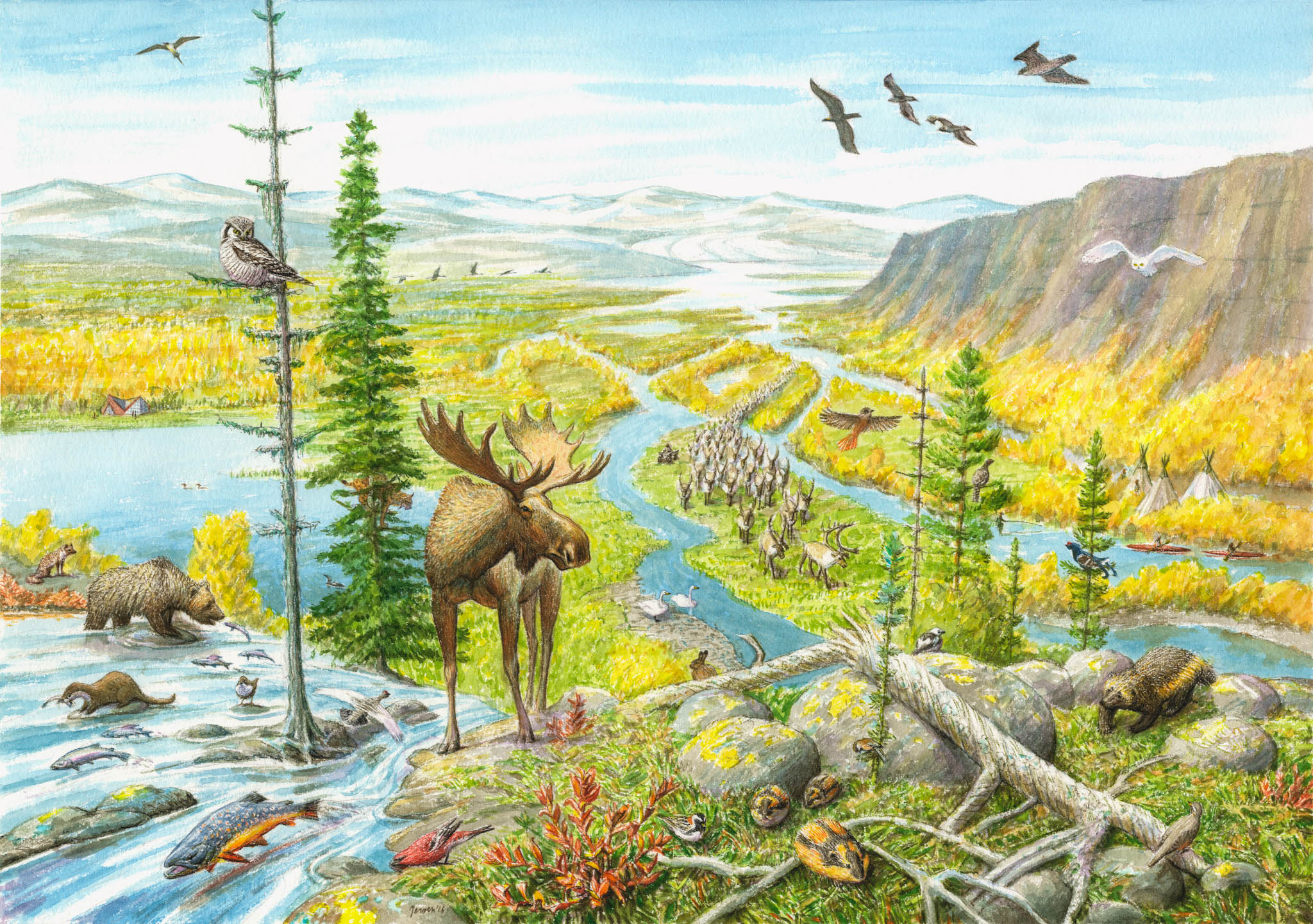The northernmost part of Swedish Sápmi is an extensive area of unique European wilderness. It is also one of Rewilding Europe’s eight priority rewilding areas, where ancient forests, mountains, glaciers, rivers and wetlands have been preserved thanks to the careful use of nature by the Sami culture.
The seasonal migration of reindeer and several free-flowing rivers still shape the landscape, with large areas under protection. Nevertheless, natural and cultural values are threatened by the industrial forestry, mining, hydropower and wind power sectors. Rewilding means averting these threats and creating new, alternative opportunities for sustainable development, in harmony with nature.
Our work here has the following main focus:
Rivers and wetlands
While hydropower is important, many obsolete barriers remain along waterways from both power stations and the days when rivers were used to transport logs. Removing these barriers allows free-flowing water to rejuvenate the landscape. Salmon and trout can recolonise stretches of waterway that were once impossible to reach, migrating freely between the sea and their traditional spawning grounds. Degraded peat bogs and other wet areas can be restored so that they can once again capture and store carbon dioxide from the atmosphere. Forestry needs to take precautions to protect and restore streams and wetlands.
Reindeer
The reindeer is a keystone species in the area; its grazing shapes the landscape and allows low-growing plants to thrive, providing space for many other species. During the winter, the reindeer depend on lichen-rich, intact forests. Once upon a time, reindeer migrated unhindered from the Gulf of Bothnia to the Atlantic – today they encounter many obstacles along their route, in the form of clear-cut forests and plantations, mines, roads, hydropower dams and other infrastructure. A switch from plantation forestry involving non-native tree species to ecologically sustainable, close-to-nature forestry is essential, promoting the growth of natural forests where lichens – a critical winter food soure for reindeer – can grow on the trees and ground. Additionally, all remaining old-growth forest must be protected. Reindeer herding is the cornerstone of Sami culture and traditional knowledge.
Climate challenges
Rewilding enhances the ability of ecosystems and their wildlife to adapt to climate change, which is having a significant impact in northern Sweden. Large-scale, industrial forestry makes the impact of climate change worse and makes reindeer husbandry more difficult. The only long-term solution is to restore nature (particularly natural forests and other ecosystems which lock up and store carbon), thereby enhancing its ability to adapt to and mitigate climate change.
Predators
Predators play an important role in nature by influencing prey populations and how they use the landscape. Carrion also provides food for many other animal species, such as Arctic foxes, eagles and ravens. At the same time, predators also greatly influence reindeer husbandry. Rewilding means exploring new ways for people to live alongside predators.
New income opportunities
Rewilding offers new and sustainable opportunities to generate income from nature, while simultaneously contributing to its protection – nature-based tourism is one example. But rewilding can also lead to better and more efficient use of natural resources. This can apply to fishing, hunting, reindeer husbandry, various forest products and food traditions. We are working within an EU Interreg project titled “Wildlife Economy” to enhance and develop such opportunities.
